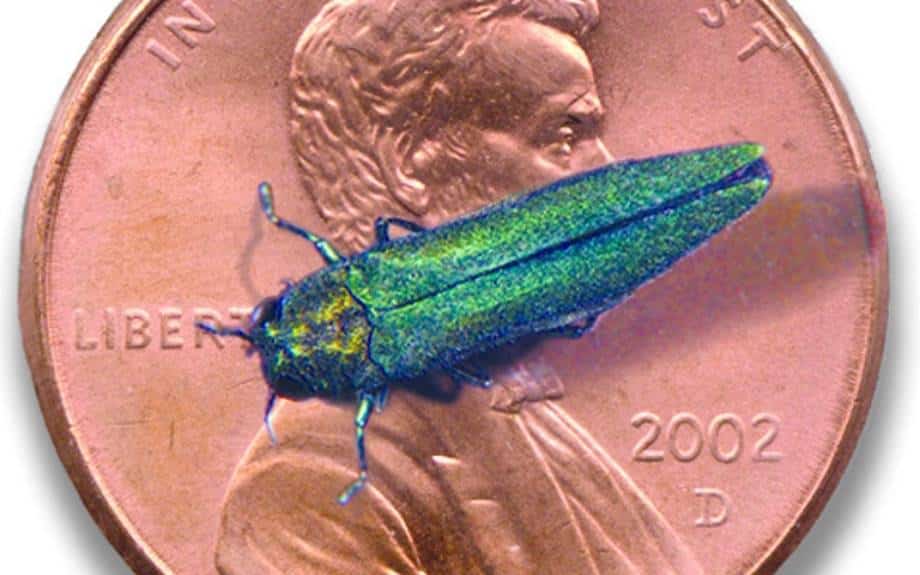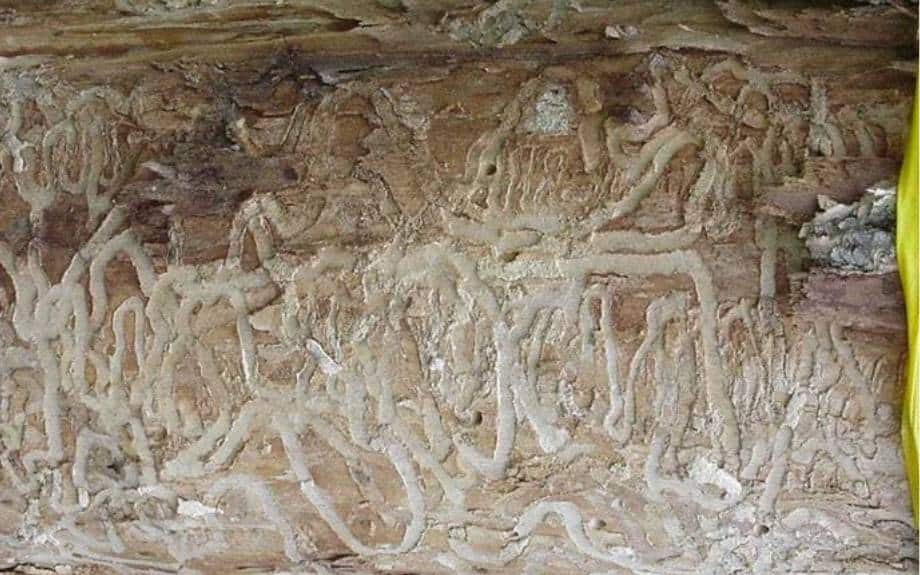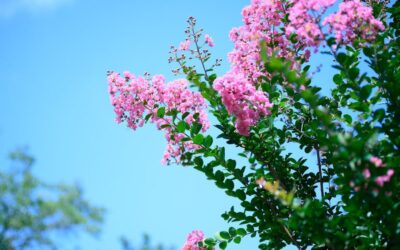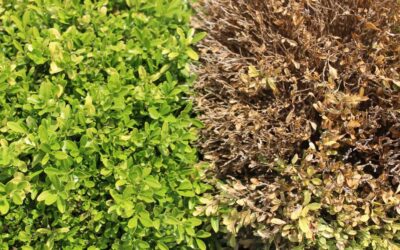Blog Topics
Imagine walking through a forest in Northern Virginia, the trees alive with the sound of birdsong. Suddenly, you notice an ash tree looking sickly. Stripped bark, thinning canopy, numerous d-shaped holes – could it be emerald ash borer?
This destructive pest could decimate our beautiful forests without recognizing and preventing its spread. In this article, you’ll learn how to identify signs of infestation and steps to halt it, ensuring our forests remain vibrant and healthy.
Key Takeaways
- Regular inspections and prompt removal of infested trees are crucial in preventing the spread of emerald ash borer in Northern Virginia.
- Key indicators of infestation include D-shaped exit holes in the bark, increased woodpecker activity, thinning or yellowing leaves, and bark splits or vertical cracks.
- Strategies for prevention include understanding the types of trees in the area, regular inspections, promoting tree health, and using insecticides.
- Halt an ongoing infestation by confirming the presence of emerald ash borers, contacting a professional arborist for diagnosis and treatment, treating the infested tree with insecticides, and promptly removing and disposing of infested trees.
Understanding the Threat: Emerald Ash Borer Infestations
This small, metallic green beetle is native to Asia and has been decimating ash trees across the U.S. since it was first detected in 2002. They’re notorious for their rapid reproduction and their larvae’s insatiable appetite, which can swiftly reduce a healthy tree to a bare husk.
What’s more, they’re not easy to detect. The adult beetles are elusive, and the larvae are hidden inside the tree. But you can look for signs like thinning or yellowing leaves, D-shaped holes in the bark, or woodpeckers feeding heavily on the tree. All these could indicate that the emerald ash borer has taken up residence.
Stopping these pests in their tracks is crucial. Regular inspections, prompt removal of infested trees, and preventive treatments can help keep these destructive insects at bay. It’s a significant undertaking, but it could save countless trees and preserve the beauty of Northern Virginia’s landscapes.

The emerald ash borer is a tiny pest that’s causing big problems for Northern Virginia ash trees. Photo by Howard Russell, Bugwood.org
Identification: Key Indicators of Infestation
Look out for telltale markers of an infestation. Knowing these key indicators of an EAB infestation can help you stop the spread and save your ash trees.
- D-shaped Exit Holes: Adult EABs leave behind a distinctive D-shaped exit hole in the tree’s bark. If you see these, it’s a clear sign of infestation.
- Increased Woodpecker Activity: Woodpeckers love EAB larvae. So, if you notice an uptick in woodpecker activity around your ash trees, it could be a sign that EABs are present.
- Thinning or Yellowing Leaves: EAB infestations cause damage to the tree’s vascular system, leading to discolored, thinning leaves.
- Bark Splits or Vertical Cracks: EAB larvae tunnel under the bark, which can cause it to split or crack. If you notice these signs, it’s time to call a professional.
Keep an eye on your ash trees and report any signs of infestation to your local extension office or the Virginia Department of Forestry. Remember, early detection and action are essential to preventing the spread of this invasive pest.
Strategies for Infestation Prevention
It’s essential to have a strategy in place to protect your trees from infestations, so consider implementing the following steps to identify and prevent EAB:
- Understand Your Environment: Know the types of trees in your area, especially if you have ash trees, which are the primary target of the emerald ash borer.
- Regularly Inspections: Examine your trees for signs of infestation. Look for thinning crowns, split bark, and D-shaped exit holes. These are telltale signs of an emerald ash borer infestation.
- Promote Tree Health: Healthy trees are less likely to attract these pests. Water your trees regularly, especially during dry periods, and fertilize them appropriately.
- Consider Insecticides: Several available methods are effective in preventing and controlling emerald ash borer infestations. Consult with a certified arborist to decide if this is the right course for you.
Remember, prevention is the most effective way to manage emerald ash borer. By keeping a keen eye on your trees and taking swift action, you can protect your trees and help prevent the spread of this destructive pest.

After hatching from their eggs, EAB larvae feed on the sapwood, leaving their tell-tale winding galleries. Photo by Virginia Department of Agriculture, Bugwood.org.
Steps to Halt an Ongoing Infestation
When you notice an ongoing infestation in your trees, immediate action is needed to halt its progress.
Contact a professional arborist right away. They’ll be able to properly diagnose the severity of the infestation and recommend the most effective treatment.
Another critical action is to remove and properly dispose of infested trees. This helps to prevent the beetles from spreading to neighboring trees. Remember, these pests can travel up to half a mile, so prompt removal is vital in limiting their spread.
Don’t be disheartened if you’re battling an infestation. With immediate action, professional help, and careful follow-up, you can still save your trees and protect your property from the devastating effects of the emerald ash borer.
Emerald Ash Borers – Frequently Asked Questions
What impact does emerald ash borer have on other tree species other than ash?
Emerald Ash Borer primarily harms ash trees. It doesn’t generally affect other tree species. However, if ash trees die out, it could disrupt your local ecosystem and indirectly impact other plant and animal species.
How does the climate of Northern Virginia affect the spread of EAB?
Northern Virginia’s climate can contribute to the spread of emerald ash borer. Warmer temperatures speed up their life cycle, leading to quicker infestations. Also, mild winters may not kill off these pests as effectively.
How long does it take for an infested ash tree to die after emerald ash borer infestation?
While you might hope for a reprieve, an ash tree infested with emerald ash borer usually succumbs within 2 to 4 years. It’s a rapid descent, with canopy decline typically starting just a year after infestation.
Are there any biological predators that can control the spread of emerald ash borer?
Yes, some biological predators help control emerald ash borer spread. These include woodpeckers and several species of parasitic wasps. However, their impact isn’t enough to halt the infestation.
Is there any governmental support or programs in Northern Virginia to help homeowners deal with emerald ash borer infestations?
Yes, the Virginia Department of Forestry offers assistance to homeowners dealing with emerald ash borer infestations. They provide resources, advice, and sometimes financial support to help manage these invasive pests.
Concerned About Emerald Ash Borer?
Call Riverbend Tree Service today at 703-402-9366. We provide the best tree health management services in Northern Virginia. Let our certified arborist inspect your ash trees and develop a plan to save your ash trees and prevent the spread of EAB, and see why we’re Northern Virginia’s best choice for tree pest management!
Proudly serving Fairfax and Loudoun Counties, parts of Arlington, Virginia, as well as Montgomery, Maryland, and Washington D.C.
Give Us a Call at 703-402-9366
If you'd like help with your trees or landscape, have any questions, or would like to schedule an appointment with one of our Certified Arborists, please give us a call. We'd love to hear from you!



